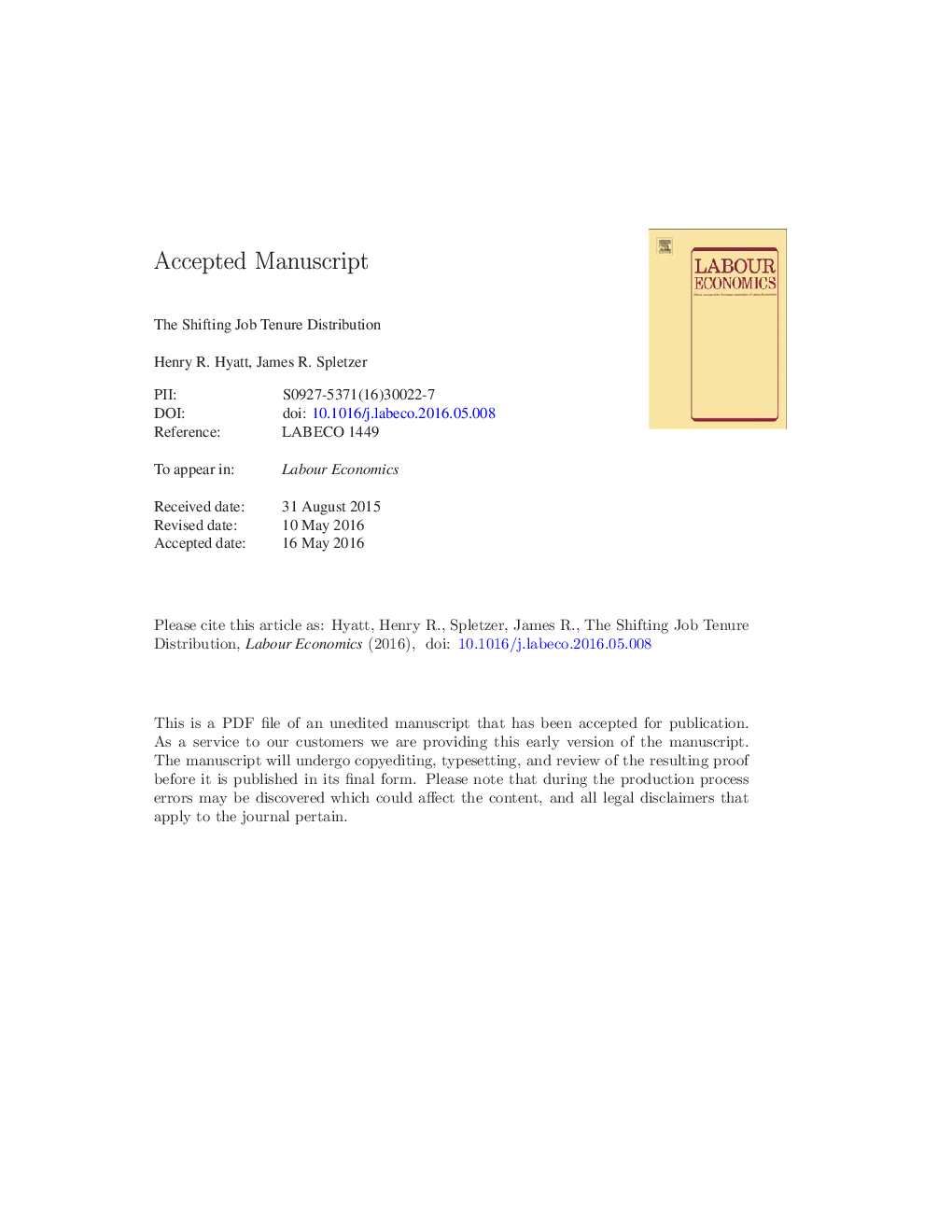| Article ID | Journal | Published Year | Pages | File Type |
|---|---|---|---|---|
| 7371719 | Labour Economics | 2016 | 43 Pages |
Abstract
There has been a shift in the U.S. job tenure distribution toward longer-duration jobs since 2000. This change is apparent both in the tenure supplements to the Current Population Survey and in matched employer-employee data. A substantial portion of this shift can be accounted for by the aging of the workforce and the decline in the entry rate of new employer businesses. This shift is accounted for more by declines in the hiring rate, which are concentrated in the labor market downturns associated with the 2001 and 2007-2009 recessions, rather than declines in separation rates. The increase in average real earnings since 2007 is less than what would be predicted by the shift toward longer-tenure jobs because of declines in tenure-held-constant real earnings. Regression estimates of the returns to job tenure provide no evidence that the shift in the job tenure distribution is being driven by better matches between workers and employers.
Related Topics
Social Sciences and Humanities
Economics, Econometrics and Finance
Economics and Econometrics
Authors
Henry R. Hyatt, James R. Spletzer,
